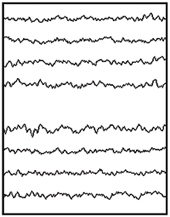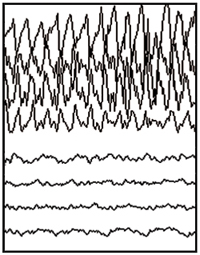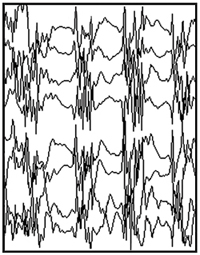Epilepsy: How Seizures Affect the Body
Epilepsy: How Seizures Affect the Body
The brain is your body’s control center. It manages everything from movement and balance to emotions and memory. When a seizure happens, some or all brain functions are temporarily affected.
| |
|
|
The brain working normally
The brain uses electrical signals to send messages throughout your body. Signals sent from different parts of your brain control different body functions. For instance, 1 part of your brain controls balance. Another part controls speech. A healthcare provider can record brain signals using a test called an electroencephalogram (EEG).
The brain during a seizure
During a seizure, excessive and abnormal electrical signals in your brain disrupt its normal activity. The way this affects body functions depends on 2 main factors. First is the location of the seizure in your brain. For instance, a seizure in a part of your brain that controls movement (the motor cortex) might cause your arm or leg to jerk.
The second factor is the spread of the seizure to other parts of the brain. For instance, a seizure that affects more of your brain may affect more of your body.
Types of seizures
The 2 main types of seizures are:
-
Partial seizures. These don’t involve the whole brain.
-
Generalized seizures. The whole brain is involved. A partial seizure can become generalized.
Partial seizures
Also called focal seizures, these seizures start in 1 part of your brain. There are 2 types:
-
Simple partial seizures. These may start with a warning called an aura. An aura is an unusual sense or feeling. It means that a seizure will soon happen. An aura can involve strange tastes or smells, stomach upset, or a feeling of fear. Or it can make you feel that what is currently happening has already happened (déjà vu). Simple partial seizures may also involve jerking movements or hallucinations. You are awake and know that you are having a simple seizure.
-
Complex partial seizures. These may also start with an aura. You may become motionless and have a blank stare. Or you may make repeated movements (automatisms) such as smacking your lips or gesturing. A complex seizure means there is a change or loss of consciousness. If you have a complex seizure, you may be awake but unaware of the seizure.
Generalized seizures
-
Absence seizures (petit mal seizures). These seizures involve a brief lapse of awareness. Signs can include staring, eye blinking, and lip smacking.
-
Tonic-clonic seizures (grand mal seizures).These may be the best known type of seizure. You lose consciousness and may fall to the ground. Your body stiffens and then convulses, with your arms and legs jerking rhythmically.
-
Myoclonic seizures. These seizures involve brief jerking movements. They usually affect both sides of your body.
-
Atonic seizures (drop attacks). During these seizures, you lose all muscle control and may fall or slump over.
Updated:
March 12, 2020
Sources:
Electroencephalography (EEG) in the diagnosis of seizures and epilepsy. UpToDate
Reviewed By:
Fetterman, Anne, RN, BSN,Image reviewed by StayWell medical illustration team.


